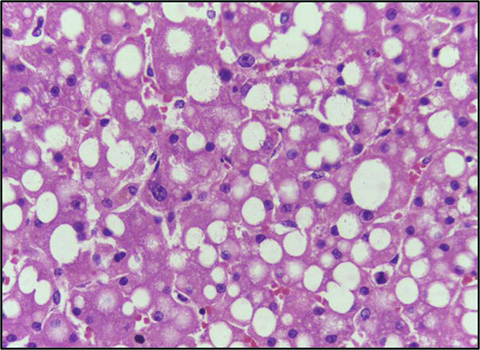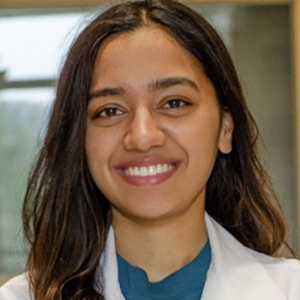From the Journals: JLR
Promising therapeutic candidate for steatosis. Unique lipid profiles in glycogen storage disease. Microglial lactic acid mediates neuroinflammation. Read about papers on these topics recently published in the Journal of Lipid Research.
Promising therapeutic candidate for steatosis
Metabolic dysfunction–associated steatotic liver disease, or MASLD, is a widespread chronic liver disease, affecting more than one-third of the global population. Symptoms include fat accumulation in the liver, also known as simple steatosis, as well as a progressive form of MASLD, metabolic dysfunction–associated steatohepatitis, or MASH, where the liver becomes inflamed and scarred. If left untreated, MASLD can progress to liver failure or even cancer. Due to limited treatment options, scientists must develop specific therapeutics to combat MASLD.

Yao Wang of Peking University and a team of researchers in China published an article in the Journal of Lipid Research on their work targeting PLIN2, a lipid droplet protein that regulates lipid homeostasis. PLIN2 coats the surfaces of lipid droplets and protects them from fat breakdown during MASLD. Therefore, they designed GalNAc–siPlin2, a sugar molecule conjugated to a small interfering RNA, or siRNA, to inhibit hepatic PLIN2. They tested its efficacy in various preclinical mouse models to mimic different forms of MASLD and MASH using high fat or high fructose diet–induced models including genetically engineered mice containing the human PLIN2 gene.
GalNAc-siPlin2 significantly reduced liver PLIN2 levels without any significant side effects. In addition, treated mice with MASLD symptoms showed reduced steatosis, inflammation, liver injury and fibrosis. In the MASH mouse model, the researchers found that GalNAc–siPlin2 treatment also alleviated steatosis and liver injury. In addition, GalNAc–siPlin2 decreased hepatic triglycerides and enhanced brown adipose tissue thermogenesis, which promotes fat and glucose breakdown.
This study highlights the potential of GalNAc–siPLIN2 as a therapeutic candidate for MASLD and/or MASH. Further investigations will assess its long-term safety and efficacy across diverse MASLD patient populations exhibiting heterogeneous symptoms.
Unique lipid profiles in glycogen storage disease
Glycogen storage disease type Ia, or GSDIa, is a rare carbohydrate metabolic disorder that can lead to long-term health complications even in individuals with a healthy diet. While elevated levels of total cholesterol, or TC, and total triglycerides, or TG, are known biomarkers for GSDIa, scientists do not understand the exact causes and disease mechanisms driving disrupted lipid metabolism.
In a recent article published in the Journal of Lipid Research, Alessandro Rossi of the University of Groningen, Netherlands, and an international team of researchers conducted a targeted lipidomics analysis of the serum of patients with GSDIa and hypercholesterolemia as well as of healthy controls. Patients with GSDIa displayed significantly increased levels of TGs, ceramides, or Cer, bile acids, or BAs, and lysophosphatidylcholines, or lysoPCs compared to healthy controls and hypercholesterolemic patients. These elevated lipids likely contribute to complications with chronic health conditions such as liver adenomas, kidney disease and insulin resistance.
These elevated lipid levels are linked to the availability of substrates like fatty acids and cholesterol, which drive lipid synthesis and storage. This study identified specific lipid biomarkers such as TGs, Cer, BAs and lysoPCs that may aid in future GSDIa patient monitoring and diagnosis.
Microglial lactic acid mediates neuroinflammation
Neuroinflammation of the central nervous system, or CNS, can cause neuronal death and neurodegenerative diseases. This activates microglia, which release proinflammatory, cytotoxic factors including lactate. Lipid droplets, or LDs, are organelles that store lipids and maintain lipid metabolism. Both lactate and LD accumulation are linked to neuroinflammatory conditions with known microglial–neuronal metabolic interactions. However, researchers do not know how microglia influence the aggregation of abnormal LDs.
Zhuoqing Lan and Shukai Lv at the Zhejiang University and their team in China published a study in the Journal of Lipid Research investigating abnormal LD aggregation in neurons using a neuroinflammatory mouse model stimulated with lipopolysaccharide, or LPS, a potent bacterial toxin triggering strong immune responses. RNA sequencing revealed that microglial-derived lactic acid, transported by monocarboxylate transporters, or MCTs, mediates LD aggregation in LPS-activated microglia. This correlated with increased expression of cell death and cholesterol genes in neurons. Neuroinflammation disrupts the bidirectional neuronal–microglial communication as microglia shift toward a proinflammatory metabolic processes, releasing factors such as lactic acid.
Treatment with pexidartinib, a potent microglial inhibitor, significantly decreased LD aggregation and lactic acid levels in the neuroinflammatory mouse model. These results suggest targeting microglia-derived lactic acid as a therapeutic for diseases like Alzheimer’s and Parkinson’s disease. Future studies will explore the underlying mechanisms of genes related to LD aggregation.
Enjoy reading ASBMB Today?
Become a member to receive the print edition four times a year and the digital edition monthly.
Learn moreGet the latest from ASBMB Today
Enter your email address, and we’ll send you a weekly email with recent articles, interviews and more.
Latest in Science
Science highlights or most popular articles

Building the blueprint to block HIV
Wesley Sundquist will present his work on the HIV capsid and revolutionary drug, Lenacapavir, at the ASBMB Annual Meeting, March 7–10, in Maryland.

Gut microbes hijack cancer pathway in high-fat diets
Researchers at the Feinstein Institutes for Medical Research found that a high-fat diet increases ammonia-producing bacteria in the gut microbiome of mice, which in turn disrupts TGF-β signaling and promotes colorectal cancer.

Mapping fentanyl’s cellular footprint
Using a new imaging method, researchers at State University of New York at Buffalo traced fentanyl’s effects inside brain immune cells, revealing how the drug alters lipid droplets, pointing to new paths for addiction diagnostics.

Designing life’s building blocks with AI
Tanja Kortemme, a professor at the University of California, San Francisco, will discuss her research using computational biology to engineer proteins at the 2026 ASBMB Annual Meeting.

Cholesterol as a novel biomarker for Fragile X syndrome
Researchers in Quebec identified lower levels of a brain cholesterol metabolite, 24-hydroxycholesterol, in patients with fragile X syndrome, a finding that could provide a simple blood-based biomarker for understanding and managing the condition.

How lipid metabolism shapes sperm development
Researchers at Hokkaido University identify the enzyme behind a key lipid in sperm development. The findings reveal how seminolipids shape sperm formation and may inform future diagnostics and treatments for male infertility.

